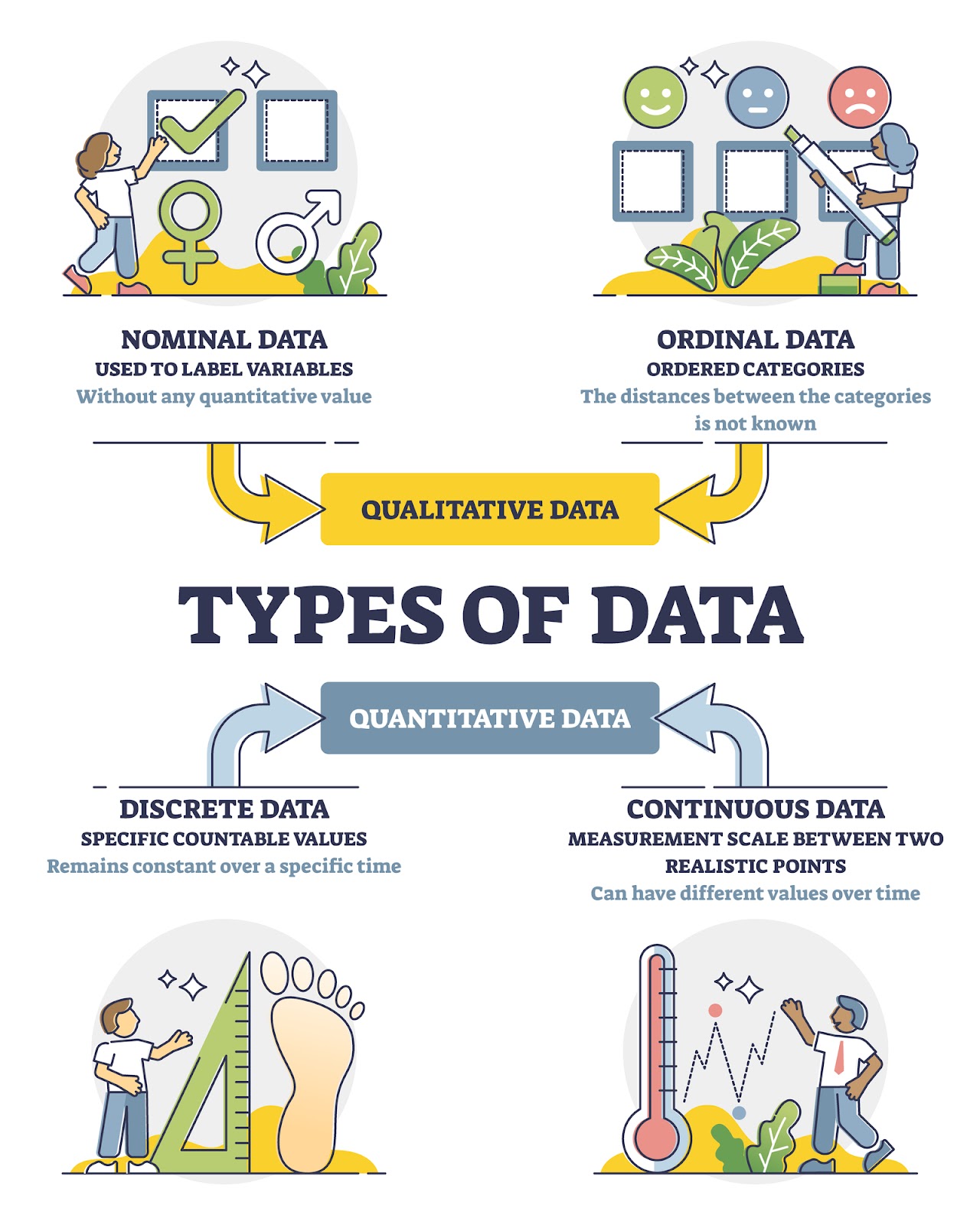Types of data
What is data?
Data is basically a collection of data objects and their attributes.

Attributes (aka. Variable, field, characteristic, dimension, or feature)
- Property, characteristics of an object
- Eye color, temperature, id, etc.
- Attribute values are the numbers or symbols assigned to an attribute for a particular object
- Distinction between attributes and attribute values
① Same attributes can be mapped to different attribute values
- Height can be measured in feet or meters (Different unit)
② Different attributes can be mapped to the same set of values
- Attribute values for ID and age are integers
③ But properties of attribute can be different than the properties of the values used or represent the attribute

Type of attributes
① Nominal
- ‘Label’
- ID numbers, eye color, sex, zip codes
- =, ≠
② Ordinal
- ‘Order’
- Rankings, grades, height
- $> , <$
③ Interval
- ‘Unit of measurement’, but arbitrary
- Calander dates, temperatures in Celsius or Fahrenheit
- +, -
④ Ratio
- ‘Unit of measurement’, but the origin is not arbitrary
- Temperature in Kelvin, length, counts and elapsed time
- *, /
Discrete and Continuous Attributes
① Discrete Attributes
- Only has a finite or countably infinite set of values
- Zip codes, counts, or set of words
- Often represented as integer variables
- Binary attributes are a special case of discrete attributes
② Continuous Attributes
- Has real numbers as attribute values
- Temperature, height, or weight
- Practically could be measured and represented using a finite number of digits
- Continuous attributes are typically represented as floating-point variables
Asymmetric Attributes
- Only presence is regarded as important
- Dummy variables
Key messages for Attribute Types
- The types of operations chosen should be “MEANINGFUL” for the type of data
- Four properties of data
① Distinctness
② Order
③ Meaningful intervals
④ Meaningful ratios
- The data type you see (often numbers or strings) may NOT capture all the properties
- The data type you see may suggest properties that are not present
- Analysis may depend on these other properties of the data : Many statistical analyses depend only on the distribution
- Key: ‘What is meaningful?’ can be determined by the domain you want to analyze about
2) Object
- A collection of attributes
- Record, point, case, sample, entity, or instance.
Warmest regards,
This is the first post to explain massive amount of information of data mining. Hope you enjoyed, and please stay tuned for next uploads!


Leave a comment